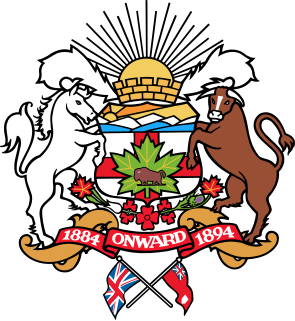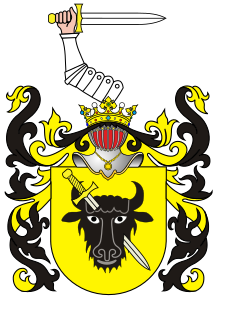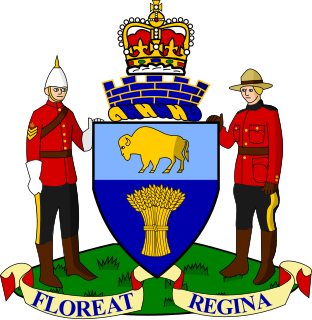 W
WThe coat of arms of Calgary, Alberta, was adopted in 1902. The arms existed only in black and white until 1984, when an alderman asked the City to develop it in full colour.
 W
WThe Seal of the State of Indiana is used by the Governor of Indiana to certify official documents. The seal has gone through several revisions since the region was a part of the Northwest Territory. It is likely the original seal, which is similar to the current one, was created by William Henry Harrison during his administration of the Indiana Territory. The current design of the seal was standardized by the Indiana General Assembly in 1963.
 W
WThe Great Seal of the State of Kansas tells the history of Kansas.
 W
WThe coat of arms of Manitoba is the heraldic symbol representing the Canadian province of Manitoba. The arms contains symbols reflecting Manitoba's British heritage along with local symbols. At the upper part of the shield is the red cross of St. George, representing England. The lower portion of the shield features a bison standing atop a rock on a green background.
 W
WThe flag and coat of arms of Moldavia, one of the two Danubian Principalities, together with Wallachia, which formed the basis for the Romanian state, were subject to numerous changes throughout their history.
 W
WThe Great Seal of the State of North Dakota is the official seal of the U.S. state of North Dakota. The coloring added to the seal varies by source.
 W
WPomian - is a Polish coat of arms. It was used by several szlachta families in the times of the Polish–Lithuanian Commonwealth.
 W
WThe coat of arms of Regina, Saskatchewan is the full armorial achievement as used by the municipal government as an official symbol.
 W
WRyc - is a Polish coat of arms. It was used by the Ryc and Rydz szlachta families.
 W
WWieniawa is a Polish coat of arms. It was used by several szlachta families in the times of medieval Poland and the Polish–Lithuanian Commonwealth.